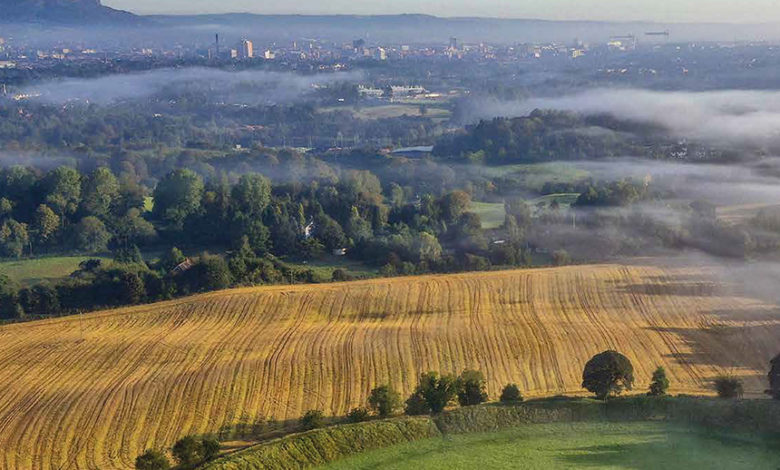Challenges to increase the circularity of the Northern Ireland economy

Northern Ireland’s economy is only 7.9 per cent circular, leaving a 92 per cent circularity gap. If the economy is to transition away from its current linear model, which will be necessary with net zero commitments by 2050, then changing the operating model of many businesses, particularly in the agriculture and manufacturing sectors, will be key.
A transformation in lifestyle for the people of Northern Ireland away from avid consumerism, and towards a cohesive, community-based lifestyle will be key to transitioning away from the linear economic model. In addition, a change to the tax model will be necessary to provide incentives for businesses to adapt circular operating models, as well as investment in waste management schemes.
Annually, Northern Ireland consumes over 33.6 million tonnes of materials, equating to 16.6 tonnes per annum per capita, a figure which surpasses the global per capita average of 11.9 tonnes.
The Circularity Gap Report was published by Circle Economy as an affiliate project of the Platform for Accelerating the Circular Economy (PACE).
The report acknowledges that Northern Ireland’s higher consumption per capita is underpinned by a relatively small population density of 135/km2, compared with, for example, England’s population density which is 434/km2. One of the contributing factors is the rural road network in Northern Ireland which consumes significant materials but serves relatively few people.
The report asserts: “[Northern Ireland’s] low population density, requiring a higher use of resources for the provision of social amenities, roads and electrical infrastructure, for example, also contributes to the rather high levels of material consumption per capita.
“Its moderately high material footprint is strongly tied to its emissions. With a consumption-based carbon footprint of 23 million tonnes, the average resident of Northern Ireland represents 9.1 tonnes of emissions per year—nearly double the global average,” the report states.
Jobs
Meanwhile, only 8.9 per cent of jobs in Northern Ireland currently fall into any category of circularity, meaning that less than one-in-10 of workers are currently in jobs which fall into any of the circular categories. Therefore, the task of increasing the circularity of the jobs market would have profound consequences, especially for the agriculture, manufacturing, and construction sectors, all of which are identified as big contributors to the linear model of the economy.
Over 70 per cent of land in Northern Ireland is used for agriculture, 80 per cent of which is used to raise cattle and sheep. The report critiques the use of agricultural land and indicates that the current proportion of farming land used for crops (5 per cent) needs to be increased.
“The concentration of agricultural activity, manure from grazing livestock and use of synthetic fertilisers has contributed to excess of phosphates, ammonia in soils, and emissions of nitrous oxide and methane, greenhouse gases more potent than carbon dioxide,” the report adds.
Simultaneously, the required retrofitting of the built environment to achieve circular growth will increase demand for roles such as installers, maintaining techniques, construction managers, quality control, and coordinating roles to help transition buildings away from oil-based heating systems. Therefore, construction employers, the report insists, have a responsibility to upskill their workforces.
The report further identifies challenges if the economy is to transition towards a circular model, with many workers in ‘non-recycling’ sectors, such as mining, needing to be reemployed in other sectors.
“For Northern Ireland specifically, research estimates that while moving towards a circular economy could bring between 13,000 and 17,000 jobs, the predicted net effects are modest or neutral,” the report notes, adding: “It is important to not just focus on the number of new jobs the circular economy can create, but to also consider the new ways of working and skills needed within existing jobs to enable the circular economy.”
The way forward
The report estimates that, although “current solutions are grossly inadequate for the challenges we face today”, Northern Ireland’s circularity can be viably doubled from 7.9 per cent to 16.1 per cent by 2032. Such an increase would almost halve the material footprint, bringing substantial positive impact in terms of climate objectives, supporting biodiversity, and reducing pollution.
“This will also bring Northern Ireland’s circularity nearly in line with the global average needed to limit global warming to 1.5oC and prevent the worst impacts of climate breakdown.”





